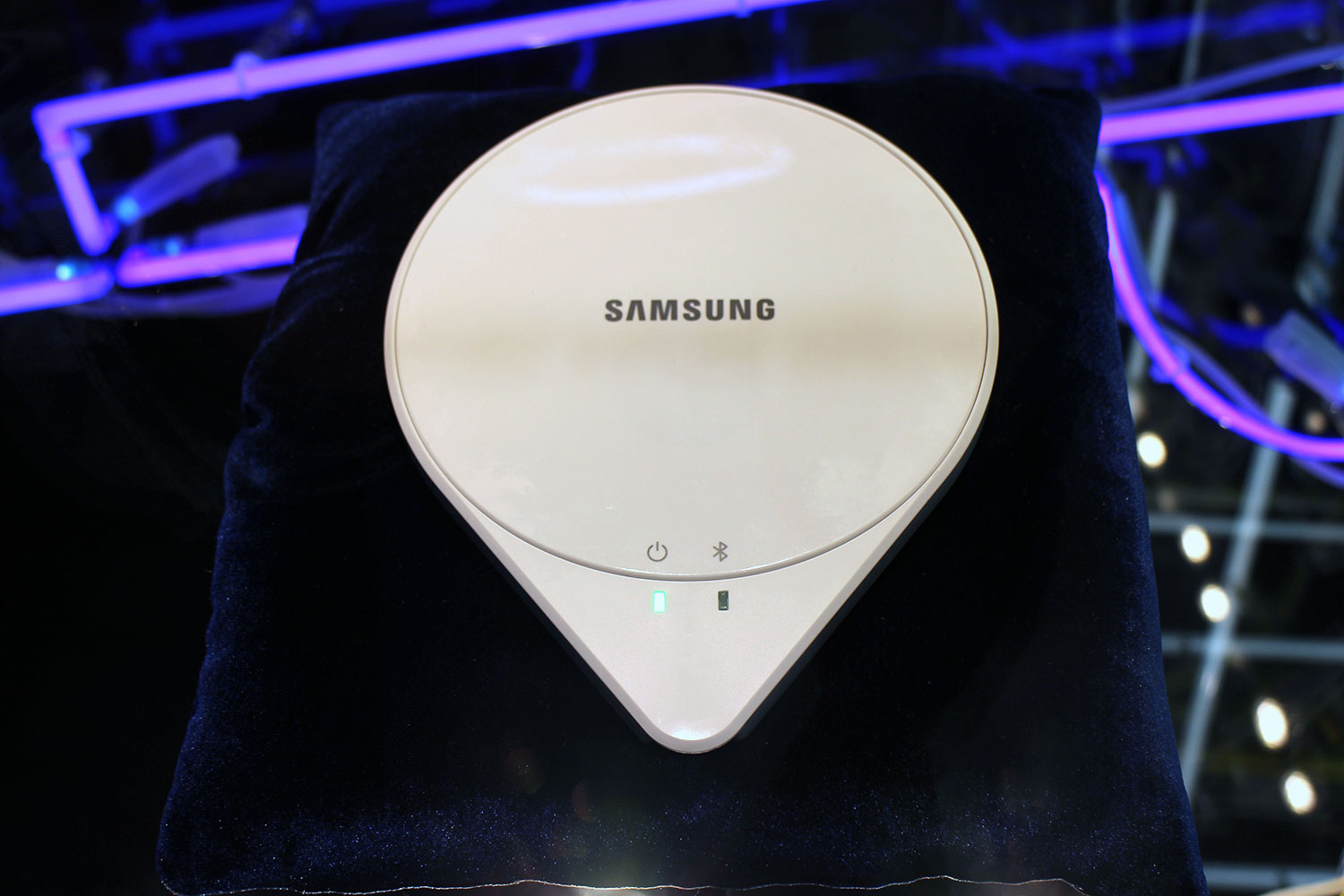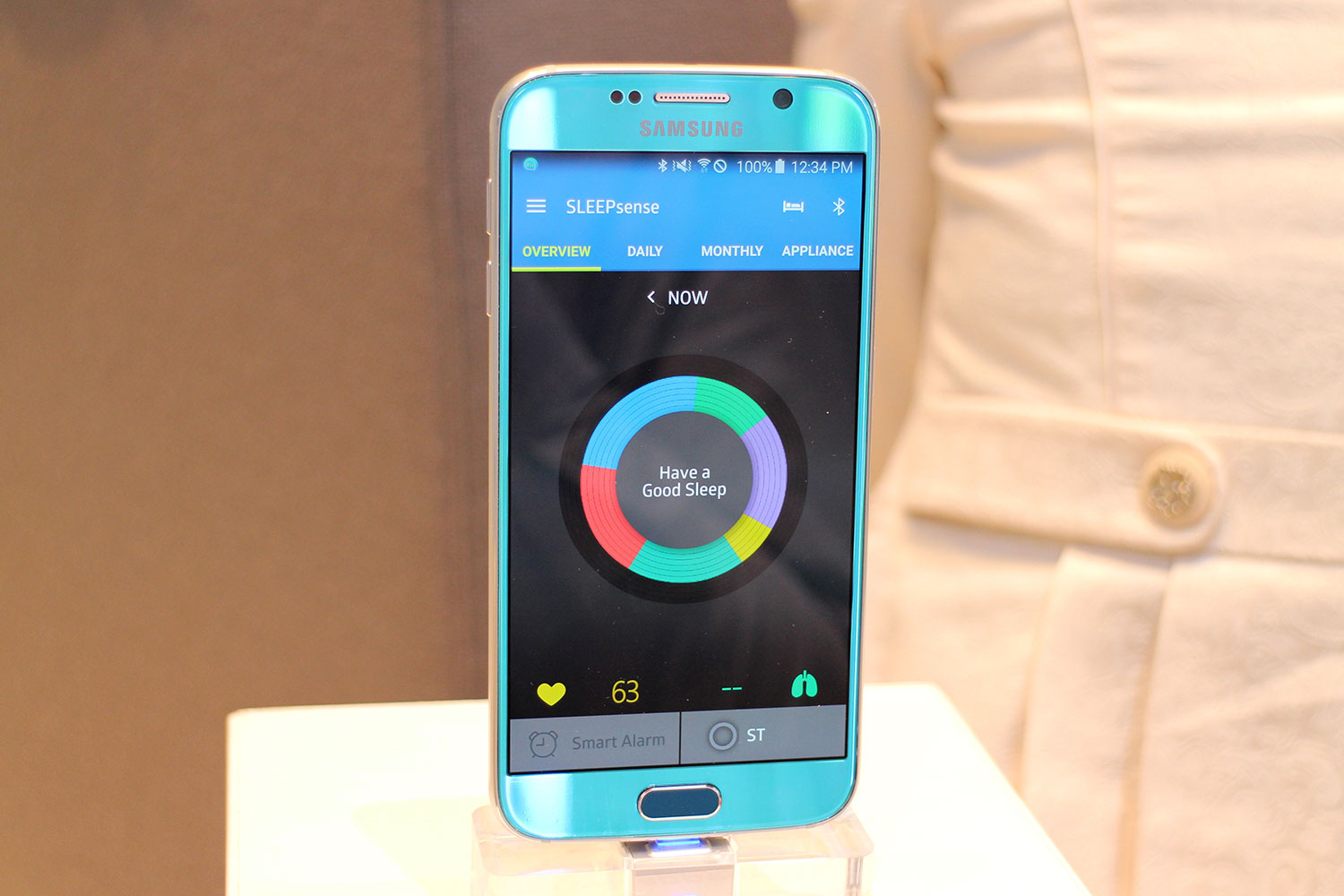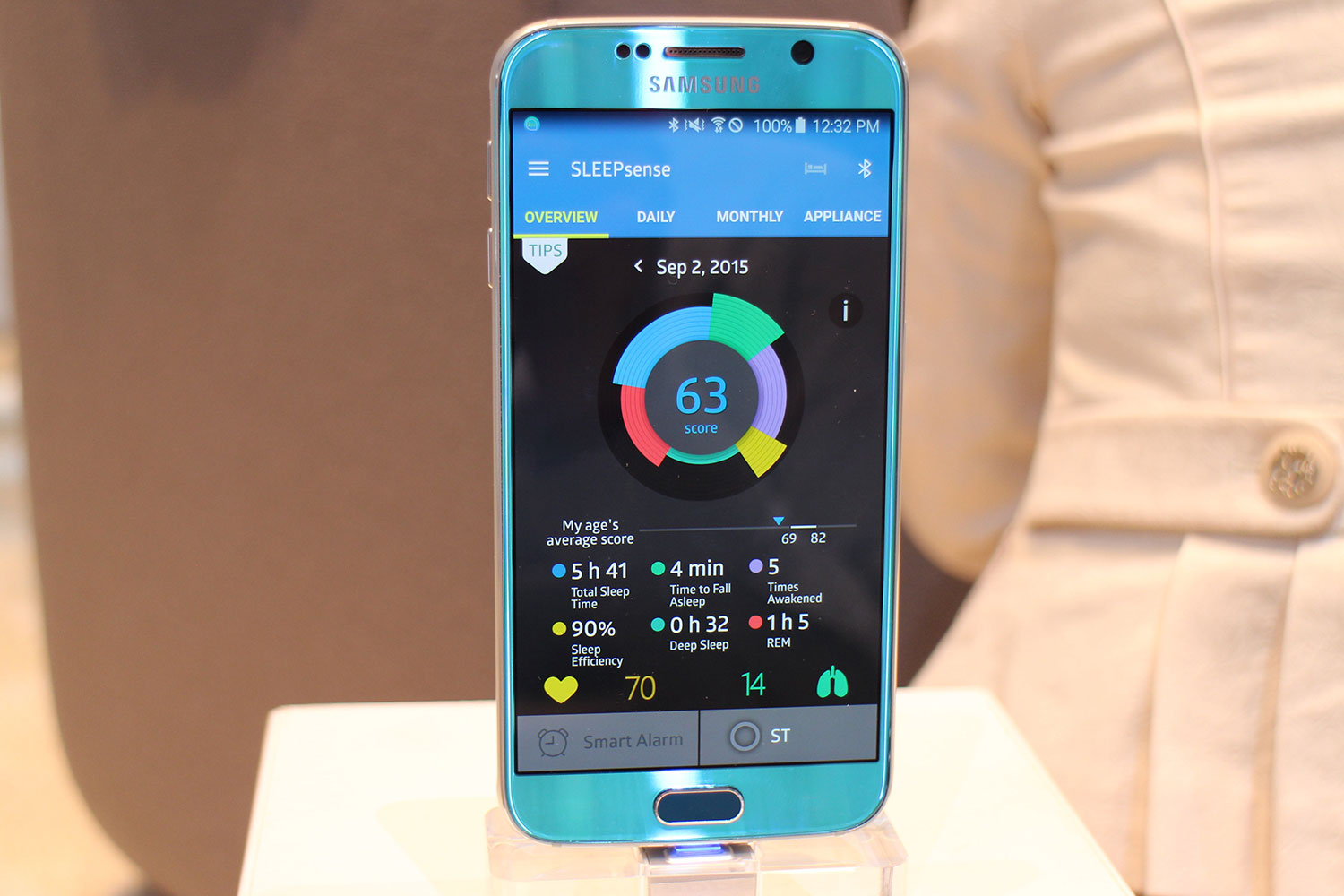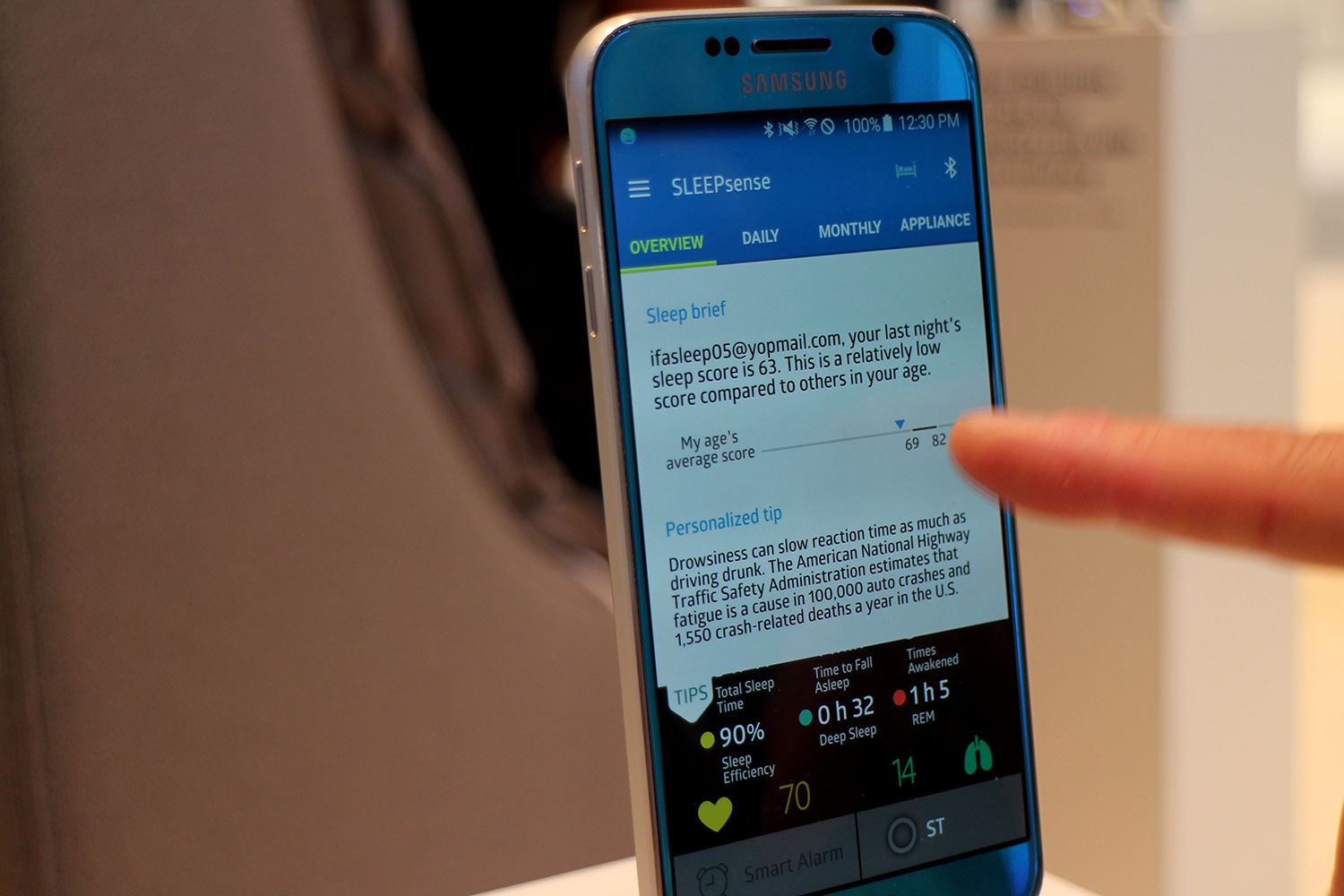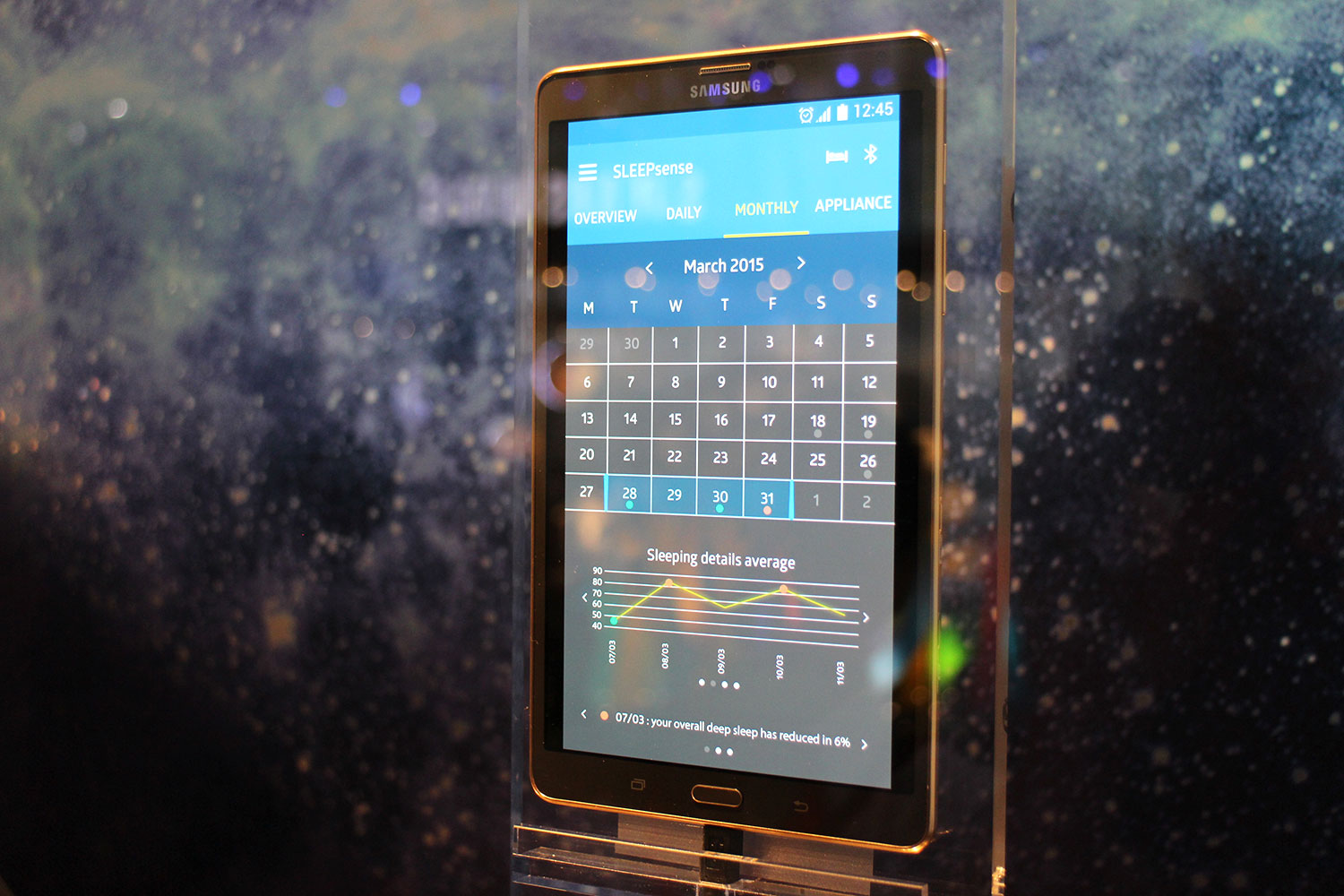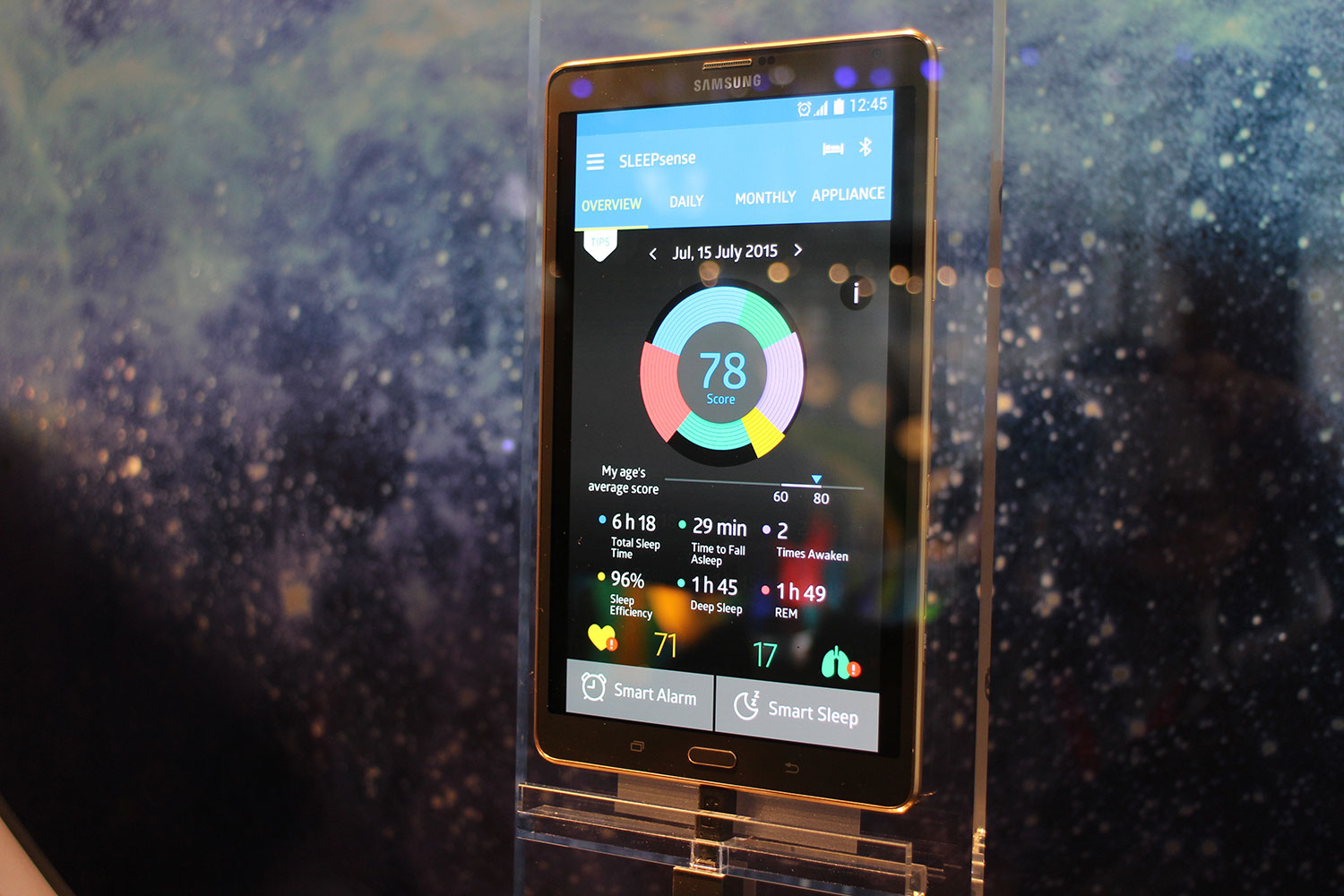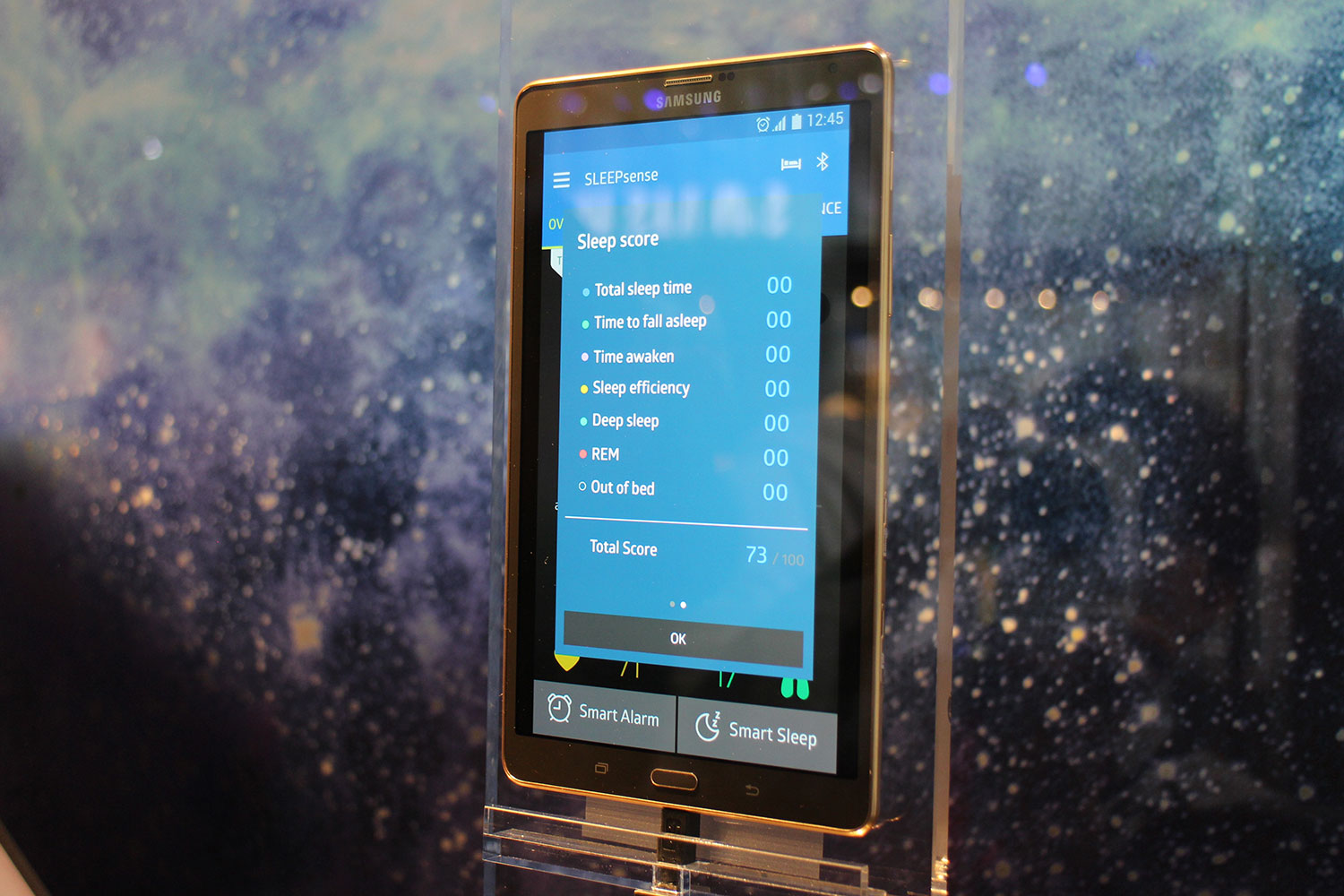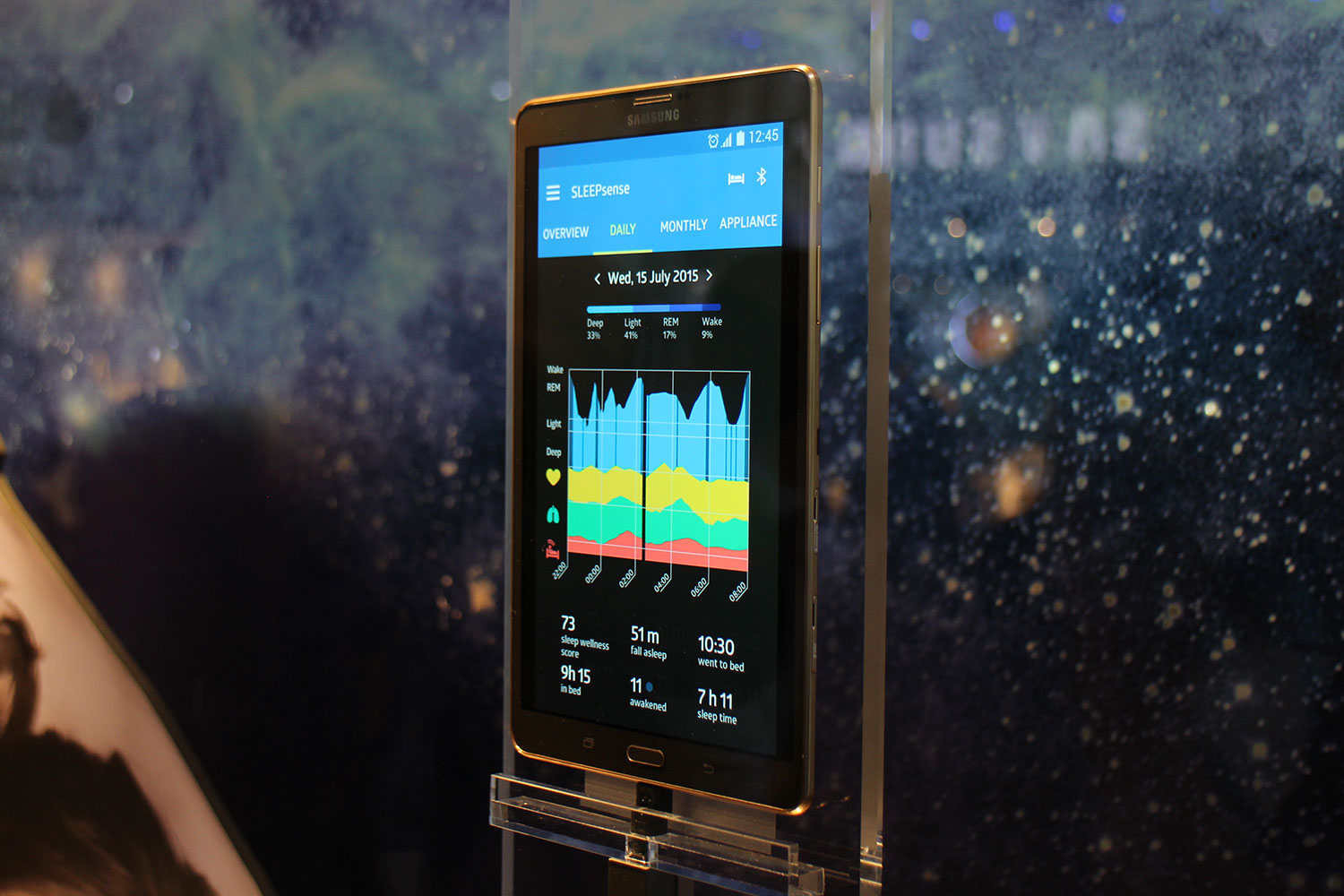It’s not enough for Samsung to make the TV you watch in the evening, the washing machine you clean your clothes in, or the smartphone you carry each day. Now the company wants to be with you when you go to bed each night. No, it hasn’t made a bed, but rather the Samsung SleepSense — a sleep monitoring device that’s part of a growing smarthome product range.
Getting a good night’s sleep is incredibly beneficial to overall health, and a monitor is the ideal way to ensure we have the right amount of the best quality possible. About the size of a small plate, the SleepSense slips under your mattress — which can be up to around 20 inches thick — and keeps watch on you overnight. It uses Samsung’s own EarlySense technology to monitor heart and breathing rate to gather data on how you’re sleeping. It collates the information gathered into an app, which works with Android or iOS, and displays the amount of time you’ve spent asleep, how often you woke up, BPM (two kinds! Both breaths per minute and heart rate beats per minute), respiratory rate, and other data.
A sleep monitoring device that’s part of Samsung’s growing smarthome product range.
The SleepSense then returns an overall sleep score, which is averaged out and compared with other people around your age. Samsung’s working with Dr. Christos Mantzoros from the Harvard Medical School to make sure the SleepSense actually does something useful with all this information; currently the related app provides personalized advice on how to improve your sleep and related tips on diet and exercise. There’s also an integrated smart alarm to wake you up at the optimum time, ready to use all the other Samsung devices in your home.
So far, this sounds similar to other sleep monitors you can buy. Where Samsung differs is in the SleepSense’s integration with its other smart home equipment. Because the SleepSense knows when you’re falling asleep, it will turn off the TV, dim the lights, or adjust the room temperature using the air-conditioning or a thermostat. It’ll need to be connected by Bluetooth to these devices. This connectivity is a strong selling point, and removes the chance of a good night’s rest being disturbed by a stray light or an annoying TV – who hasn’t woken up on the couch, disoriented and groggy, with all the lights on and the TV blaring? That’ll never happen again, in theory anyway.
Disclaimer: The SleepSense will keep watch over only one person, even in a double bed. If you buy more than one, however, they can all be synced with a single app, helping you keep watch over your kids’ sleep patterns, for example.
Samsung’s making a considerable investment in the Internet of Things this year. Its aim is to have all its hardware compatible with the IoT by 2020, so devices like the SleepSense are only the beginning. Smart home equipment can be a hard sell, and rarely do we get a good reason to go out and buy any connected devices at the moment. The SleepSense comes close to being a compelling connected product, thanks to providing a useful, beneficial function — making us healthier — while automating the devices we own based around this basic, daily activity.
There’s no confirmed release date or price for the SleepSense yet, but we were told by Samsung that it’s a finished device, and the company is waiting for the right window to put it on sale. This should be by the end of the year, if everything goes according to plan.
Highs
- Smart home connectivity adds convenience
- Uses data to offer advice
Lows
- No release date
